Through a series of real-life examples, we reveal the mistakes you should be avoiding when writing your next customer service letter.
We also have a How to Write a Good Customer Service Letter – Example
1. Opening With “Dear Valued Customer…”
Nearly all of us have received a letter at some point beginning “Dear Valued Customer…” This is a classic example of not personalising a letter.
If a customer was truly ‘valued’, the company would have made the effort to include the individual’s name and put it at the top of the letter.
If you don’t have the customer’s name on file, beginning with Sir/Madam is a much more appropriate – and less offensive – option.
Here are 26 Tips to Personalise Customer Experience
2. Dressing up Bad News as Good News
Lots of companies try to dress up bad news as good news. It is much better just to be honest.
Here is an example where Snapfish say:
“To ensure you get a better experience on the new website, your old projects (photo books, calendars, etc.) will not be moved across. Moving old to new is not always possible, so starting afresh on the new website is the best way to go.”
I have never thought that losing data will ensure that I get a ‘better experience’.
It would have been better to say something like “Unfortunately, during the migration it will not be possible to move your projects across to the new server.”
3. Failing to Provide a Phone Number or Email Address
Failing to provide a phone number or email address that your customers can use to contact you is a fairly common mistake.
This often comes about because the wrong headed paper is put in the printer. The one with the address and phone number has run out and been replaced by the generic letter paper with just the logo on the top.
Needless to say, this lack of information makes life unnecessarily difficult for your customers.
Here are 19 tips for reducing customer effort
4. Not Checking for Spelling and Grammar Errors
There is no excuse for sending out a letter with poor spelling and grammar – especially as you are likely to be sending out several hundred copies of the same letter and only have to check one!
This lack of care is especially damaging when responding to a customer complaint.
Review your quality control processes to make sure you don’t embarrass yourself or lose a customer.
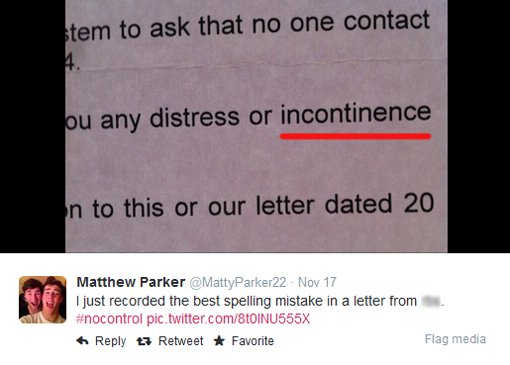
And, if you use a template when apologising to a customer, don’t forget to personalise it…
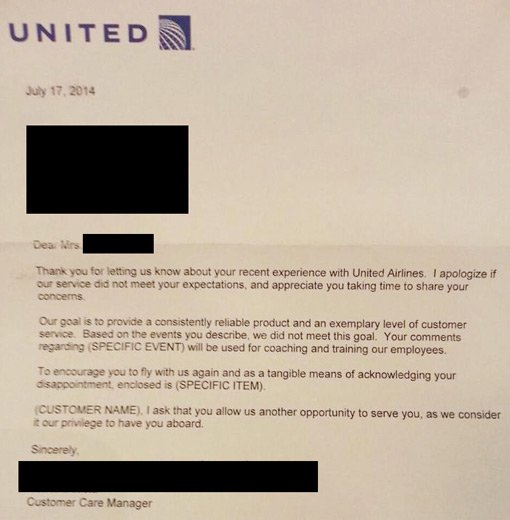
5. Wrongly Attributing Mr and Mrs
Getting this wrong can be unforgivable, especially for customers who may be sensitive about their unusually high or low voice.
While this is an easy mistake for an agent to make when filling out customer detail forms, especially if they are dealing with a unisex-name such as Jamie or Ashley, it is best not to take any chances.
If you aren’t sure… leave it out!
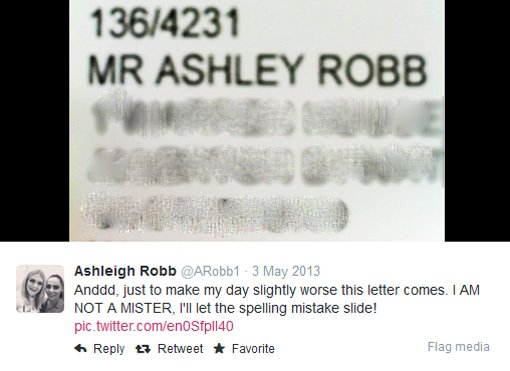
6. Misspelling a Customer’s Name
This is an easy one to make, particularly if the name can be spelt in a number of ways. My surname is Pearce, but I have been sent letters as Pierce, Peace and even Pearle.
These errors were presumably entered into the database by an agent who misheard – and didn’t double-check the details.
To prevent such embarrassing inaccuracies in the future, train your agents to confirm the spelling of such important details during every call – perhaps even using the phonetic alphabet.
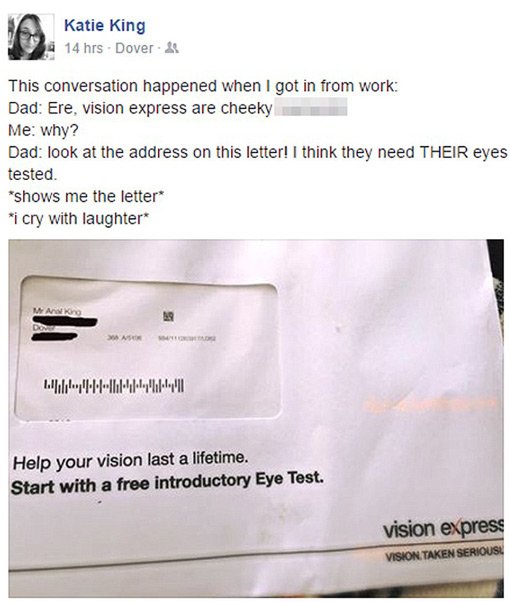
7. The Less Than Helpful “Company Cover-up”
The “company cover-up” letter tends to be a mass mailing outlining and apologising for a recent problem with a product or service.
While there is good intention here, this is probably one of the most frustrating examples of customer service that exists, as these letters tend to fall short in two key areas:
- By blasting the letter to your entire database, you will inevitably be contacting people who are not affected by the issue – wasting your time as well as theirs.
- No contact details are provided for those who have been affected by the issue, making it a frustrating experience for those who may require more information.
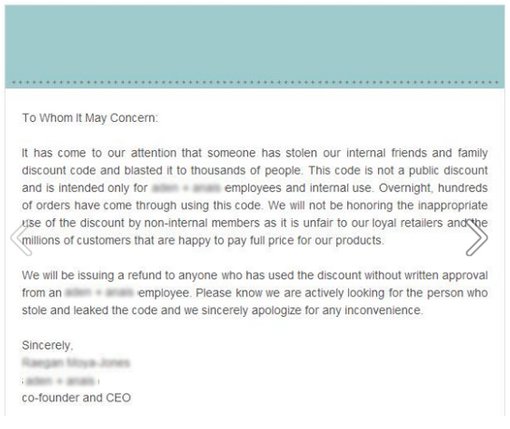
8. Rejecting a Customer Letter in a “Foreign Language”
This is an example where a letter was returned because it was in a “foreign language” (Welsh) – and shows little respect for the customer’s cultural identity.
If you really don’t have the resources to translate a document, a far better solution might be to follow this up with a phone call.
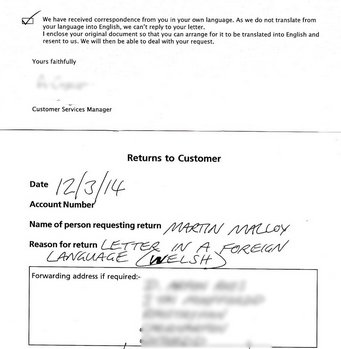

9. Sending out a Letter That Contradicts the Customer’s Contract
I once had a letter from a well-known building society saying that my account was £1.43 overdrawn and that I had to take immediate steps to repay it. This was despite the fact that I had a £400 overdraft limit at the time.
They said that it was a computer error and it should never have been sent out.
This scenario wastes everyone’s time, puts unnecessary strain on the contact centre and should be avoided at all costs.
What has been your experience of customer service letters? Have you seen or made any of the above mistakes?
For more great tips and advice on customer service letters, read these articles next:
- How to Write a Great Customer Service Letter – With Examples
- “Dear Valued Customer” – 22 Steps to Writing a Great Customer Letter
- How to Write a Thank-You Letter to a Customer – With Examples
Author: Jonty Pearce
Reviewed by: Hannah Swankie
Published On: 30th May 2017 - Last modified: 15th Aug 2025
Read more about - Customer Service Strategy, Customer Correspondence, Customer Experience (CX), Customer Service, Language, Service Strategy














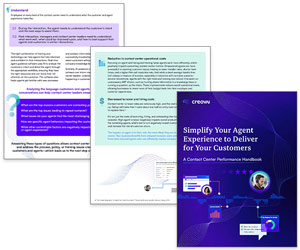







Super article with some real takeaways.
My surname is Dealy and I frequently get this corrected to “Deeley”, etc. I have had “Delay” and “Deadly” as well!
Sending an email to multiple email addresses through outlook using the BCC option and then discover that everyone can see each others email addresses. Oh dear!!